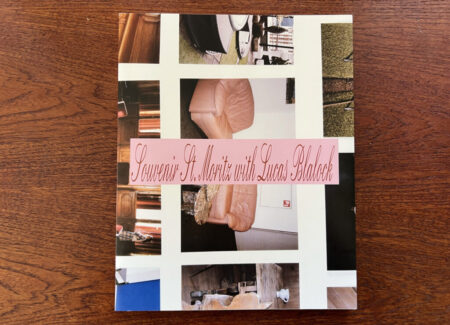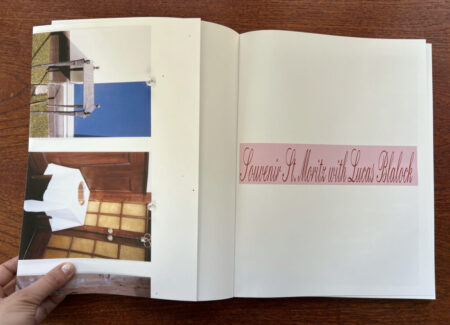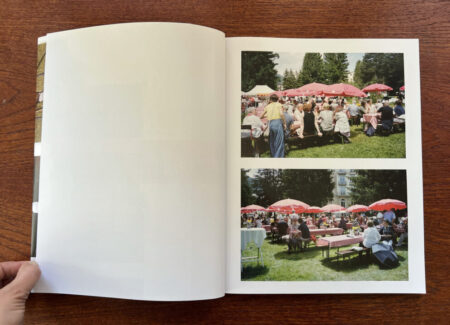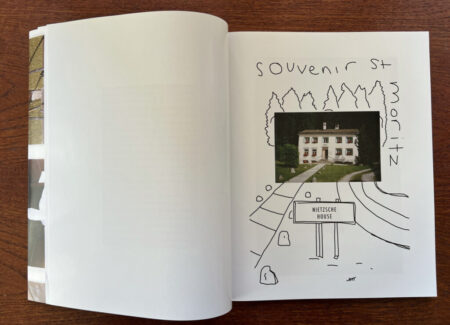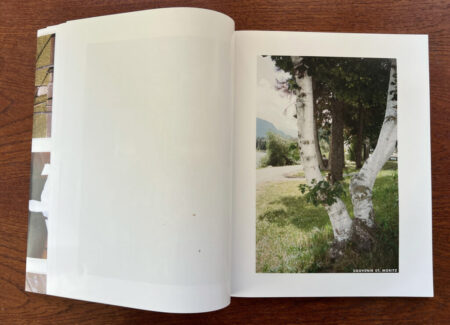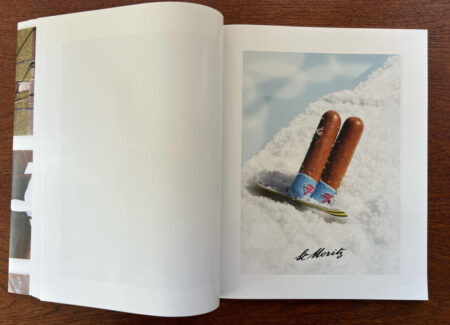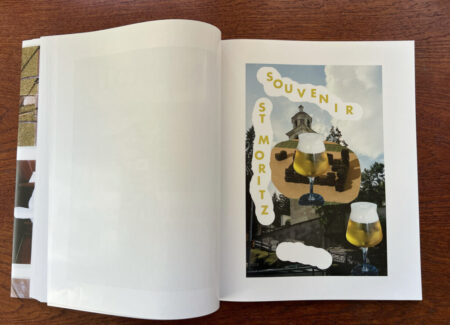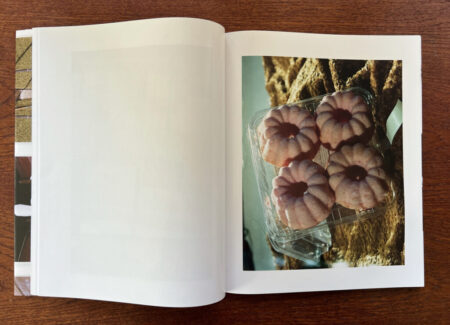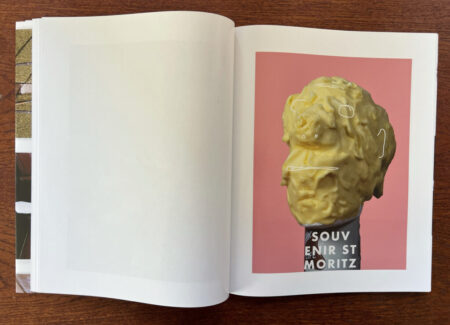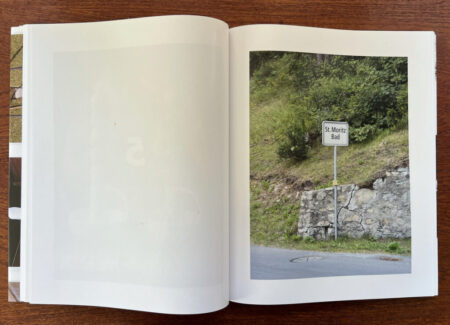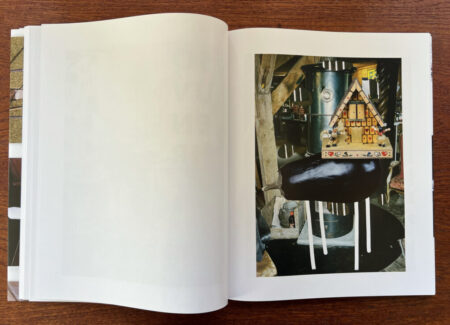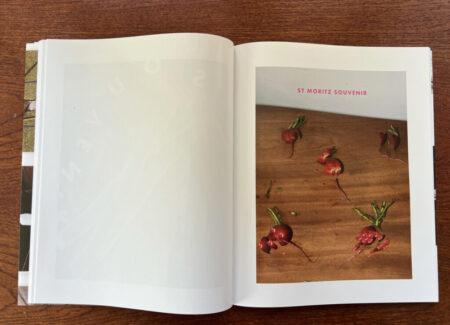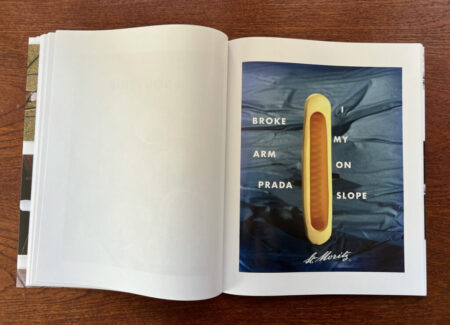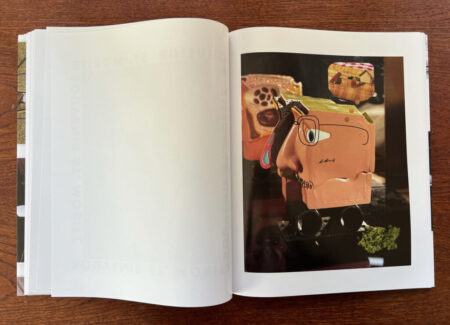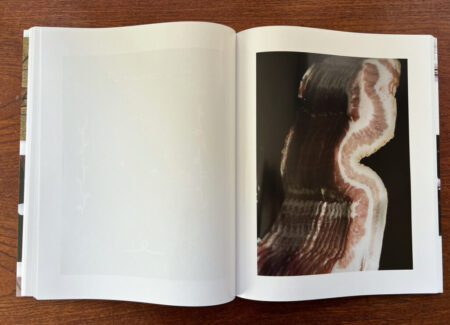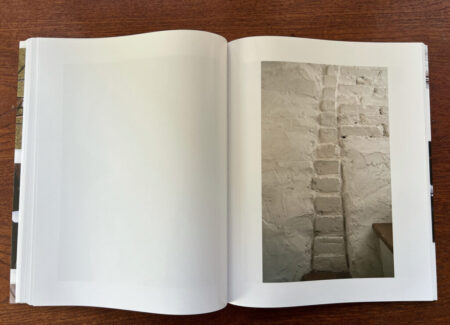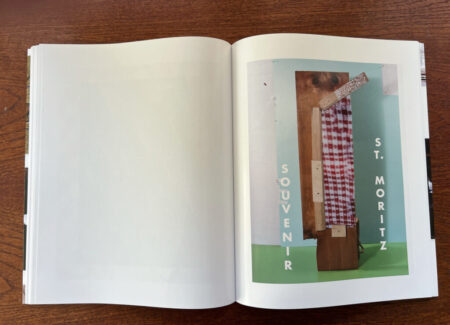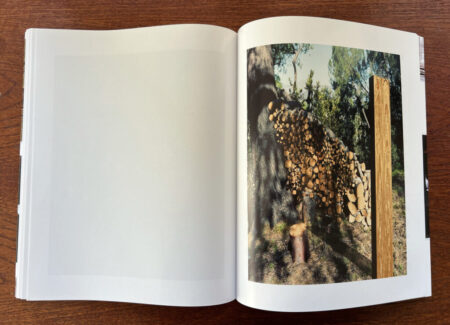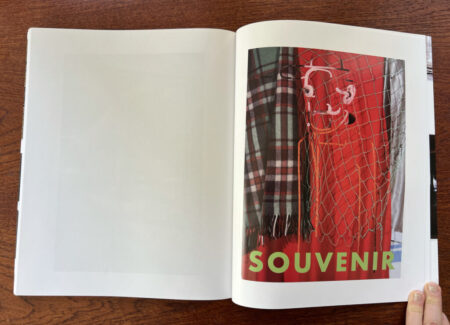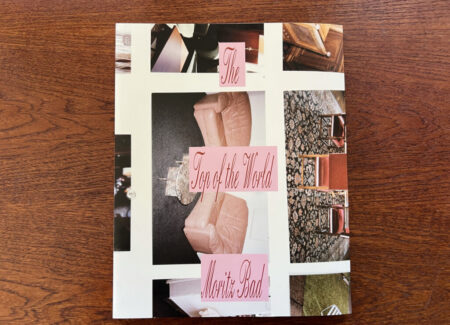JTF (just the facts): Published in 2024 by St. Moritz Tourismus AG (here). Softcover, 240 x 300 mm, 168 pages, with 67 reproductions. In an edition of 500 copies. (Cover and spread shots below.)
Comments/Context: American artist and 2025 Guggenheim Fellow Lucas Blalock’s photobook Souvenir St. Moritz No. 5 is the latest in an annual series that commissions and showcases one artist’s interpretation of Saint Moritz, Switzerland. Previous Souvenirs have included monographs by the photographers Torbjørn Rødland, Roe Ethridge, Colin Dodgson, and David Sims & Jake Chapman. As the title suggests, this is the fifth installment in the series.
The book has the look and feel of a high fashion magazine. Soft cover, slick design, sturdy, yet slightly larger than a typical magazine. The paper stock on the cover is a matte stock that wraps around a soft cover endpage. The book block is printed on a semi-gloss paper stock. In a formal and conventional style, Blalock’s photographs appear only on the right facing page. The feel of the paper is soft and sleek as one moves through the book’s pages.
The photobook begins with two horizontal photographs, one atop the other, both describing crowded outdoor picnic areas. The picnic tables are covered in gingham cloth, a material that is a common motif in Blalock’s constructed images, but in this case, found in the world and photographed as a souvenir. The next page holds an evocative and cryptic note about the artist’s first visit to Saint Moritz. The third page is the first image that has the feel of an advertisement: a tourist’s snapshot-style photograph of the Nietzsche House–you guessed it, in Saint Moritz–surrounded by an illustration that has the look of the black Photoshop paint tool. Drawn onto the white page are the alpine trees that ostensibly exist behind the Nietzsche House, and the walkways and roads in the foreground that lead up to the house. This page also dons a handwritten “Souvenir St Moritz” logo that is digitally handwritten and printed onto the page. This is the first plate in the book that portrays a poster look and feel, one that advertises both the town and the project itself, as the artist takes on his role of portraying the luxurious Alpine landscape, ski slopes, top tier restaurants and hotels of Saint Moritz in his own visual grammar.
A mélange of subject matter and visual approaches follow, yet two principal categories emerge: one that conveys views of strange things that might have been found–a split tree, unusual donuts, bacon as you’ve never seen it before, or wrinkled Ricola wrappers–and then images that are layered constructions with fonts, that show obvious signs of interruptions and interventions assumed to be assembled digitally in the artist’s studio.
Much like any tourist would, Blalock points his camera at things anyone might wish to remember from their vacation: a range of foods that were eaten, sites that were seen, self-portrait reflections, moments looking at friends, moments looking at a partner. Other subject matter is more typical of Blalock’s signature sensibilities and dark humor: anthropomorphized hot dogs skiing and crashing, a self-portrait of the artist crudely drawn into the frame by way of the ghost of a Photoshop image layer, where all that is seen of the body a single eye, an ear, a mustache, and bowler hat. Some images feel like snapshots while others read as more overtly assembled, manipulated, layered, photographic collages, akin to the works that were part of Blalock’s 2013 photobook Windows Mirrors Tabletops (reviewed here), where Blalock established his now signature acknowledgement and distinctive use of digital editing tools that make the viewer further question photography’s actual relation to indexicality.
Still other images are branded with text like “Souvenir St. Moritz” or “I broke my arm on Prada Slope, St. Moritz,” always in a font that is thoughtfully chosen, often different from the previous font, and placed to enhance the graphic qualities of the photograph. There are three font types: a cover script, scrawled location/brand, and clean block lettering. While the souvenir logo isn’t present on every page, it is syncopated throughout the photobook’s pages so as not to continue to allow the reader’s mind to wander too far away from the idea of Saint Moritz and the recurring reminder that despite some good fun and teasing, this work is a commissioned advertisement for the town. The symbols of alpine tourism like beer, skiing, and alpine architecture are upended and reworked in a very Blalockian fashion and appear on nearly every page.
The images that leave me in awe are those where the artist doodles portraits or caricatures from materials that he has found and brought back into the studio to mangle and reshape. These images feel deliberately awkward, distended, grotesque and very alluring. In this photobook they’re made with a distinct infusion of the alpine region aesthetic. Like the photograph of a bust made of yellow buttery gobbledygook set in front of a rose backdrop, or the profile of a man’s cartoon face as he pops a thought bubble that shows dreams of an alpine vacation complete with a red gingham picnic blanket. These examples make me think more deeply about atypical bodies that find their way to a place like the exquisite resorts of St. Moritz.
This unusual book may generate interest in Saint Moritz, a place that seems utterly fantastical and out of reach to most, but for me, it also becomes a way to peer through the keyhole at how an artist works both in and outside of the studio. Blalock and I are colleagues at Bard College, and I imagine him to be something of a mad scientist creating in the studio rather than one that is often out in the wild making photographs candidly on-site. It is interesting to note the photographs made en plein air that were then rigorously reworked and upended in the studio in order to come back out as part of the sausage. Following the code switch of the images in this book is part of the pleasure of reading it. There is a long history of photographers going elsewhere to make their own images of a new place, but I would argue, never one who has done it quite like this.
Collector’s POV: Lucas Blalock is represented by Gallerie Eva Presenhuber in Zurich and New York (here) and Rodolph Janssen in Brussels (here). Blalock is represented by art[cc]corp for commissioned work (here). Blalock’s work has not yet reached the secondary markets with any regularity, so gallery retail remains the best option for those collectors interested in following up.
